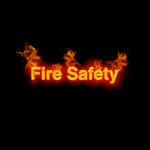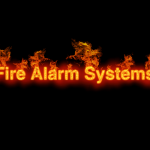A fire safety management plan outlines your arrangements for implementing, controlling, monitoring, and reviewing fire safety standards as well as ensuring that the standards are maintained. The plan provides a description of the arrangements for managing fire safety effectively to prevent the occurrence of fire, and if fire breaks out, to protect both property and people.
The information provided here will provide guidance under Article 11 of the Regulatory Reform Order 2005. It is devoid of prejudice to anything that an enforcing authority may require. The plan needs to specify the organisation, planning, monitoring, control, and review of the fire safety measures and provisions in the premises.
Planning
Adequate planning may include:
- How the person responsible suggests the fire safety risk assessment should be conducted and determines priorities in the elimination of hazards as well as reducing risks to individuals.
- The adoption of a systematic approach to the completion of risk assessments to decide on the priorities and setting objectives to either reduce or eliminate risks.
- The selection of appropriate measures for keeping risk under control.
- The establishment of performance standards and the implementation of protective and preventative measures.
Organisation
It needs to detail how the organisation is structured and may include:
- How the health and safety information is communicated to employees.
- The involvement of employees in ensuring compliance with all aspects of the fire safety risk assessment.
- The person that will be making decisions regarding the protective and preventative measures as well as those involved in their implementation.
- Effective systems of communication to employees, other employers, or other responsible individuals.
- The securing of competence by having adequate instruction, information, and training.
- Details of protected areas/fire doors.
- Maintenance plans.
- The prevention of arson.
- Fire prevention and housekeeping measures.
- Details of practice sessions and fire drills.
- Evacuation/emergency plan.
- Fire safety risk assessment.
Control
Identify the individuals at each level that may be responsible for carrying out fire safety issues throughout the premises.
Established measures of control should:
- Ensure that there’s sufficient supervision.
- Set specific and measurable standards for judging performance.
- Ensure that the people tasked with certain responsibilities understand them.
- Clarify the health, safety, and fire safety responsibilities.
Monitoring
Identify how the person responsible will be measuring the success of the fire safety policy. It needs to include regular checks of fire precautions, investigations into the causes of accidents, and recording of other important information:
- Record all monitoring processes and activities.
- Ensure that all accidents are investigated to ensure that lessons are learnt and procedures are altered if need be.
- Have a plan and have routine inspections to ensure that measures are in place and maintained.
Review
Identify a regular procedure for review that includes any identified deficiencies as well as a process by which they can be corrected. The review should:
- Have a system that ensures that the remedial work not done is given top priority and completed.
- Have mechanisms in place for ensuring that remedial work is completed.
- Review the systems of management to make sure that they stay active.
Fire Emergency Plan
You should have an emergency plan in place for dealing with a fire incident. The emergency plan is for ensuring that people in your premises are aware of what to do in case of fire and making sure that evacuations from premises can be done safely. If you or your organisation has 5 or more employees or your premises are licensed or an alterations notice that requires it in force, then the details of the emergency plan should be recorded. It is good practice to maintain a record even if it isn’t recorded. The following information may offer guidance under Article 11 of the Regulatory Reform Order 2005. It is devoid of prejudice to anything that an enforcing authority may require.
You need to provide clear and relevant information as well as appropriate instructions to both your staff as well as the employers of other people working in your premises including contractors, about the prevention of fires and what to do in case of a fire. If you plan to employ children, you need to first inform their parents of the significant risks that you have identified as well as the precautions take. You also need to co-ordinate and co-operate with other responsible people that use any part of the premises. It is highly unlikely that an emergency plan can work without this.
The basis of the emergency plan should be on the outcome of the fire risk assessment and be available for the employees, their representatives, as well as the enforcing authority.
The emergency plan in very small premises may be no more than a fire action notice. However, in more complex and larger premises, the emergency plan should be more detailed and compiled after consultation with the rest of the occupants as well as other responsible individuals such as owners that have control over the building or premises.
The emergency plan needs to be appropriate to the premises and may include:
- Arrangements for fighting fire
- Identifying key escape routes, how people can access them and escape from them to a place of complete safety
- The specific arrangements for high fire-risk areas
- Arrangements for the safe evacuation of people considered particularly at risk, such as young persons, lone workers, and people with disabilities
- Any processes/appliances/machines/power supplies to be isolates/stopped in case of fire
- The identity and duties of staff that have specific responsibilities in case of fire
- How evacuation of the premises should be handled
- What staff need to do in case of fire
- The assembly points once people leave the premises as well as procedures for checking if the premises have been evacuated
- How people are to be warned in case of fire
- Plans for dealing with people after they leave the premises
- Phased evacuation plans
- The training required for employees and arrangements for ensuring that it is given
- Procedures for meeting the fire and rescue personnel upon arrival and notifying them of any special risks such as the location of highly flammable substances
- How the fire and rescue and other critical services will be contacted and who will be responsible for this
- Contingency plans for when the life safety systems such as fire-detection, evacuation lifts, and warning systems, smoke control systems, or sprinklers are out of order
As part of the emergency plan, it is advisable to prepare post-incident plans for dealing with situations that might arise such as the ones that involve:
- Inclement weather
- Getting people away from the building
- People that wish to re-join their friends
- People with personal belongings (valuables) still in the building
- Unaccompanied children




